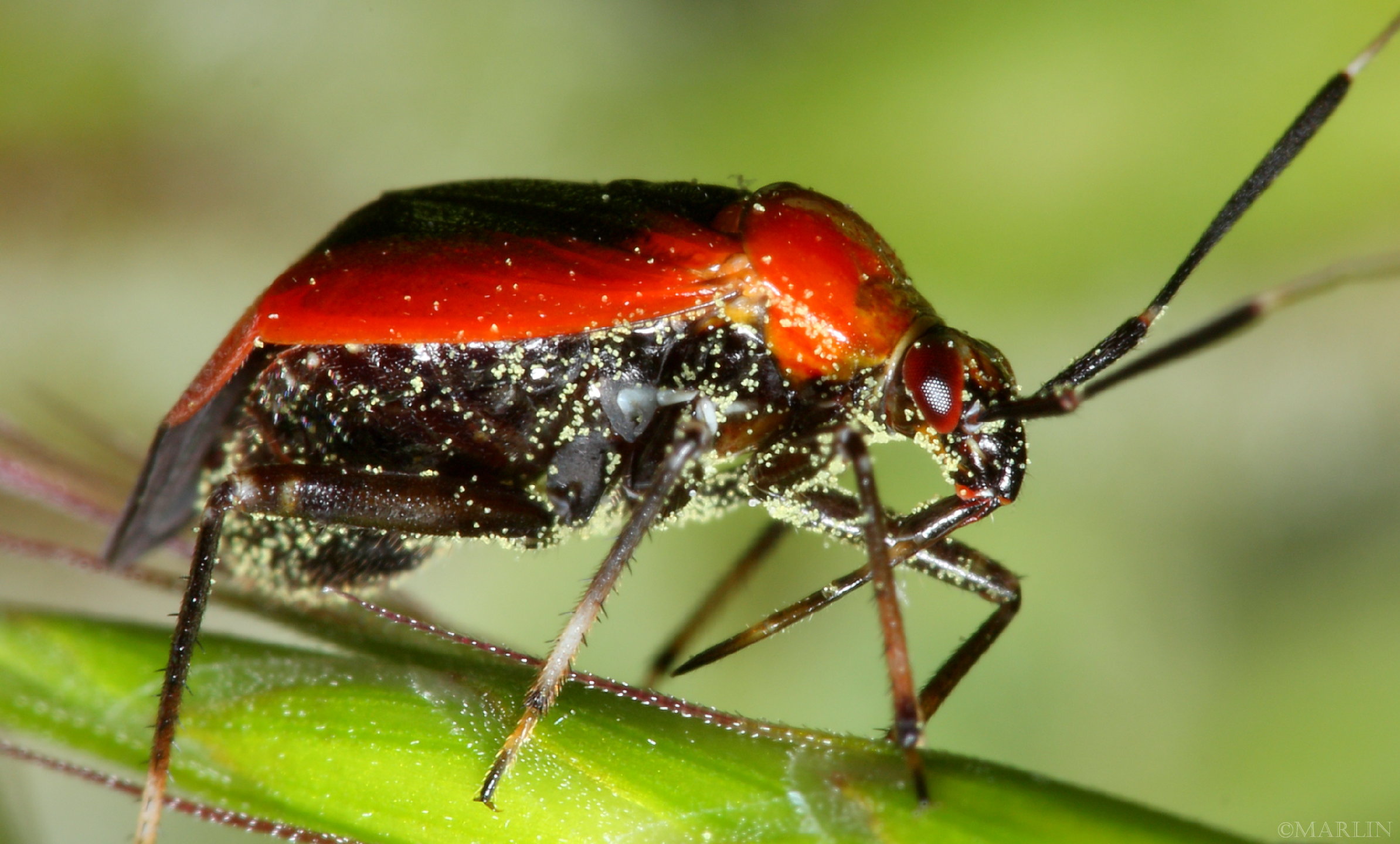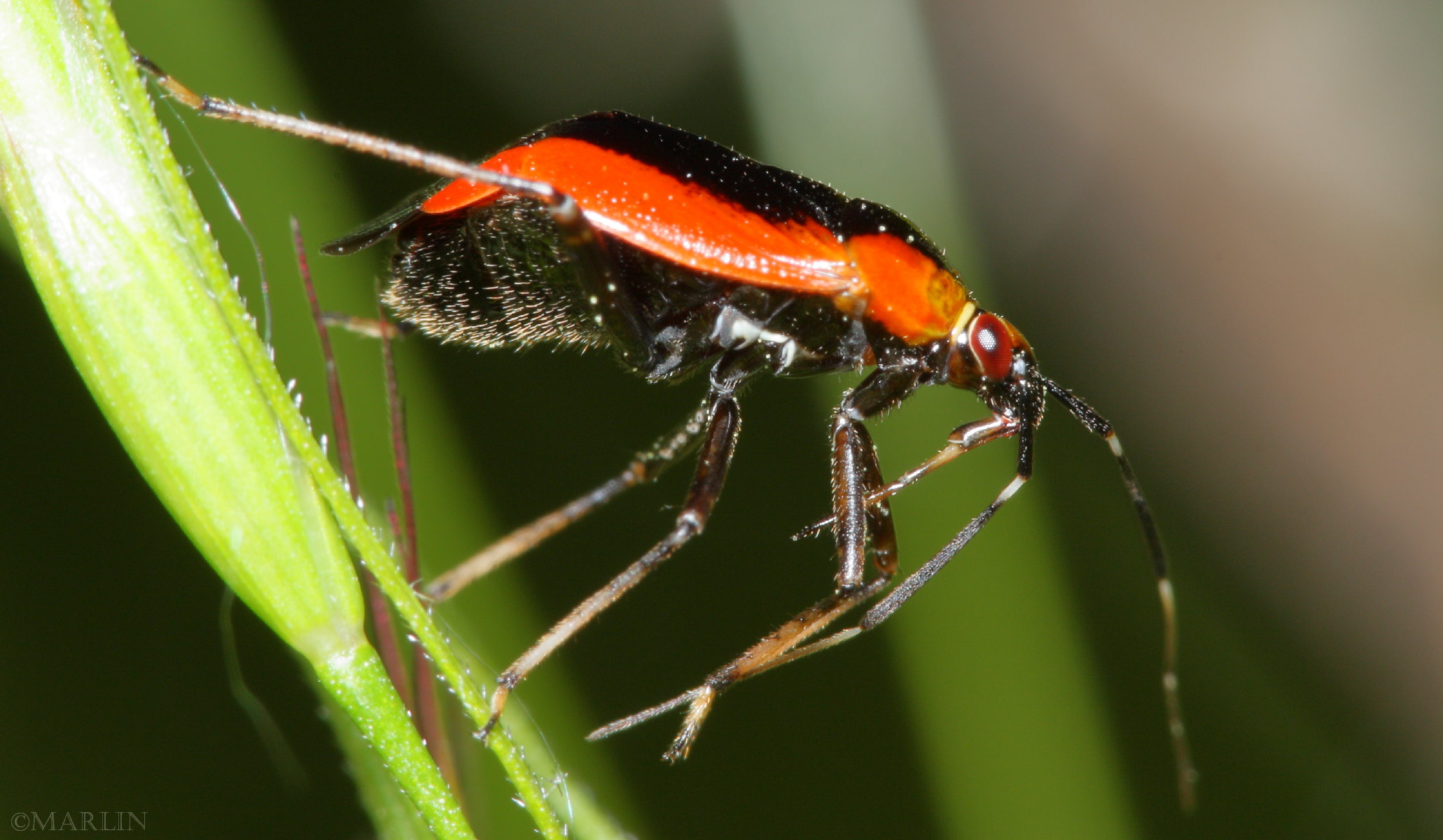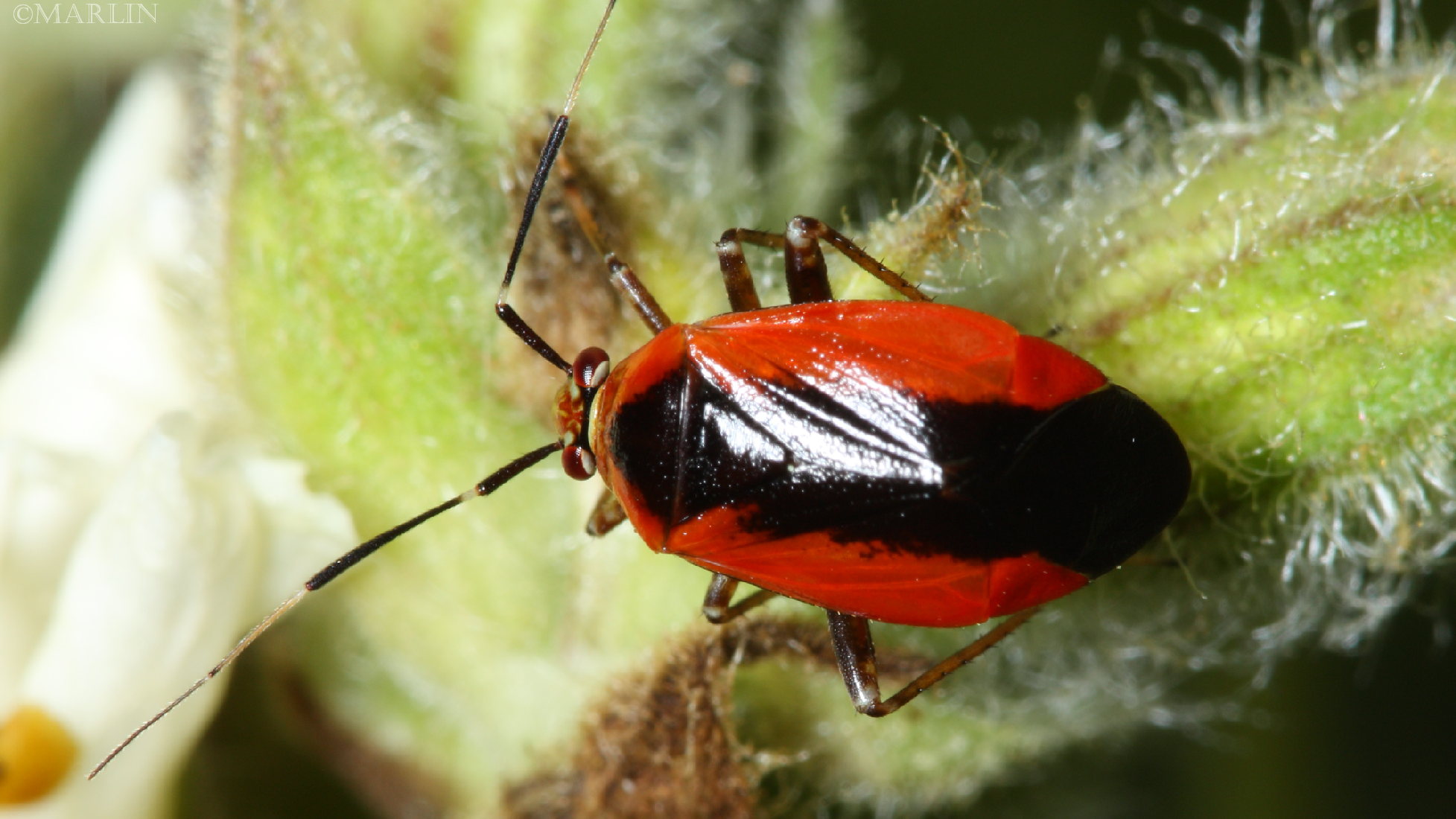Plant Bug – Metriorrhynchomiris dislocatus
4-segmented rostrum (visible under the insect’s head) is used to suck sap from living plants
Family Miridae – Plant Bugs
Live adult bugs photographed in the wild at McKee Marsh Forest Preserve, DuPage County, Illinois. Size = 10mm
Miridae, the largest family in Heteroptera are economically and globally important pests of alfalfa, apple, cocoa, cotton, sorghum, and tea, among many others. Some plant bugs are predators of other insect crop pests and have been used successfully in biological control. Certain omnivorous plant bugs have been considered both harmful pests and beneficial natural enemies of pests on the same crop, depending on environmental conditions or the perspective of an observer.
As high-yielding crop varieties that lack pest resistance are planted, mirids are likely to become even more important pests. They also threaten crops as insecticide resistance in the family increases, and as the spread of transgenic crops alters their populations. Predatory mirids are increasingly used as biocontrol agents, especially of greenhouse pests such as thrips and whiteflies. [3]
The Miridae are unique within the Heteroptera in their possession of specialized setae known as trichobothria on the middle and hind femora. Most species lack the pair of ocelli found situated between the compound eyes of the majority of heteropteran species; the exception to this rule is the subfamily Isometopinae, which is thought to be the sister group of all remaining Miridae (the most basal lineage). The hemelytra, or forewings, nearly always have a well-demarcated cuneus, a triangular structure that is found in some other groups such as the non-parasitic Cimicoidea (bed bugs and their relatives) and whose anterior margin if formed by the costal fracture.
References
- John L. Foltz, University of Florida, Dept of Entomology & Nematology, Hemiptera: Miridae
- Bugguide.net, Metriorrhynchomiris dislocatus
- Alfred G. Wheeler and Sir T. Richard E. Southwood FRS, Biology of the Plant Bugs
- American Museum of Natural History, National Science Foundation and University of New South Wales, Plant Bugs (Miridae)
Order Hemiptera | Bugs Main | Bugs Index | Assassin Bugs | Plant Bugs | Ambush Bugs



